Great Washington State Parks to Visit in Winter
Winter is a great opportunity to visit your favorite places, but with an interesting twist. Look no further than Washington State Parks. The Washington state park system is one of the largest in the nation, with each park offering seasonal attractions — from birding, to snowshoeing — across the state.
Plan ahead
- Check availability. Read the Washington State Parks winter schedule to ensure your destination is available before making plans. Check out WTA’s Hiking Guide before you go to make the most of your visit.
- Know the forecast. Plan ahead for weather and avalanche conditions, drive times and vehicle accessibility to be sure you can make it to and from the park safely.
- Bring the right equipment. Make sure to bring proper traction devices and extra clothes for your drive or your adventure(clean, dry socks go a long way). Extra food doesn’t hurt during the winter either. Be sure to remember your Discover Pass, which grants you access to all state parks (or visit on a fee-free day).
North Cascades
Pearrygin Lake State Park
Length: 3 miles of trails
Elevation Gain: Varies
Why it's great in winter: It offers opportunities for snowshoeing, cross-country skiing and even fat-biking!
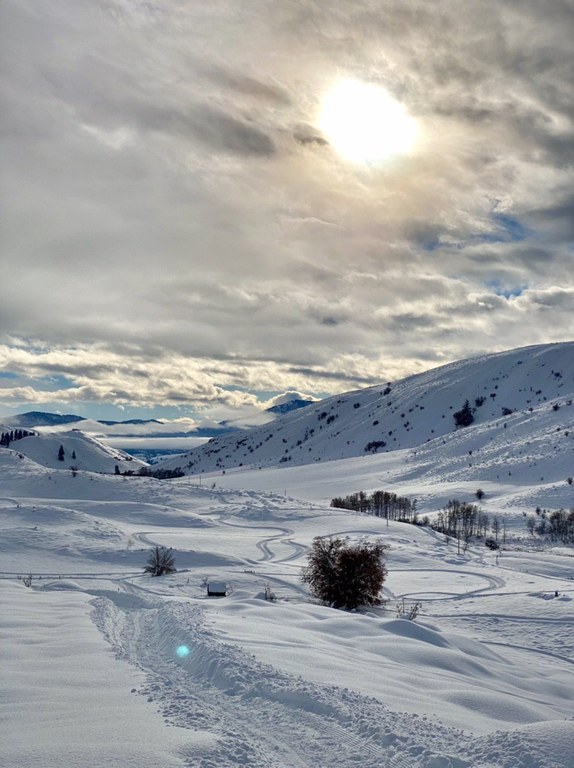
Pearrygin State Park. Photo by Ash99.
> Plan your visit to Pearrygin Lake State Park using WTA's Hiking Guide
Rockport State Park
Length: 3 miles, round trip
Elevation Gain: 750 feet.
Why it's great in winter: Rockport State Park offers year-round access. The park’s Discovery Center and picnic area are perfect for a day trip!

Rockport State Park. Photo by Kim Brown.
> Plan your visit to Rockport State Park using WTA's Hiking Guide
Eastern Washington
Steptoe Butte State Park Heritage Site
Length: 168-acres of day-use land
Elevation Gain: Varies
Why it's great in winter: There’s plenty of land to snowshoe or cross country ski across at this park — just make sure your vehicle has proper traction for your trip to the trailhead.
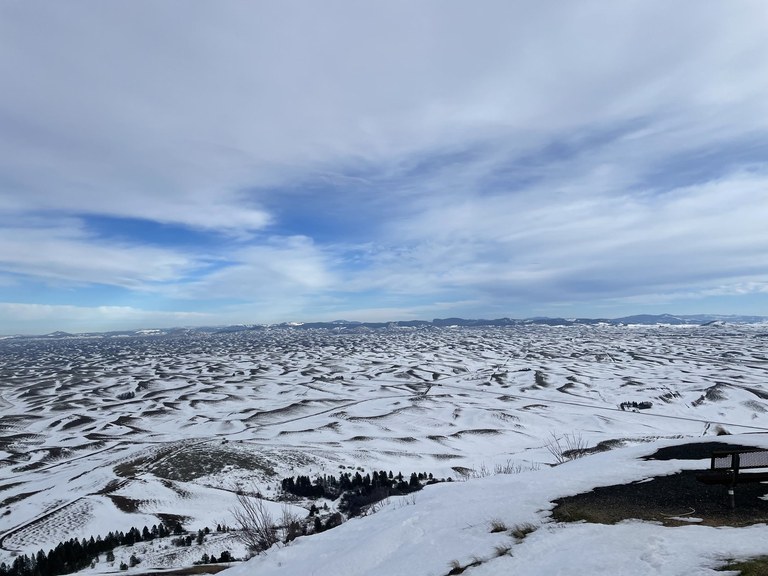
Steptoe Butte State Park Heritage Site. Photo by RichP
> Plan your visit to Steptoe Butte State Park Heritage Site using WTA's Hiking Guide
Mount Spokane State Park
Length: 4 miles, roundtrip
Elevation Gain: 1,328 feet
Why it's great in winter: The winter route up Mount Spokane is a classic hike in Eastern Washington. Besides snowshoeing, visitors can cross-country ski, splitboard and even bring their dogs.
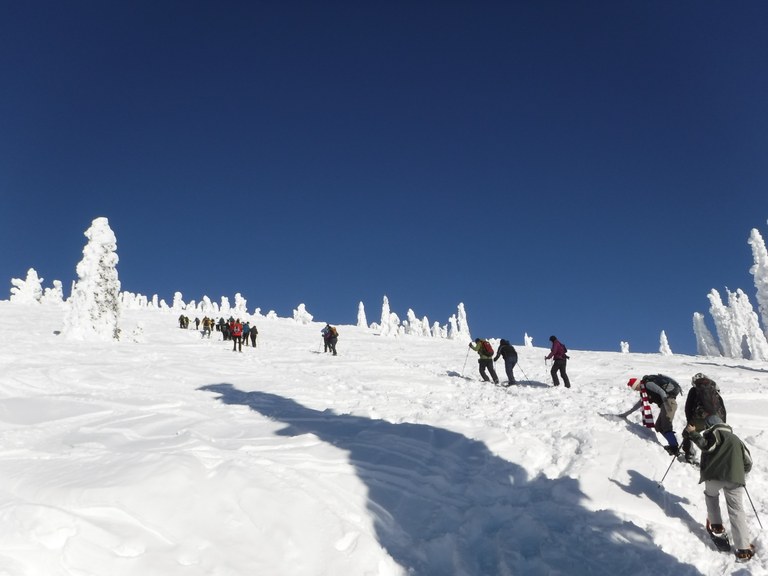
Mount Spokane State Park on the Summit Route.
> Plan your visit to Mount Spokane State Park using WTA's Hiking Guide
Central Washington
Wenatchee Confluence State Park - Horan Natural Area
Length: 2.5 miles, roundtrip
Elevation Gain: None
Why it's great in winter: The seasonal progression of Central Washington is on full display in winter at the riparian Wenatchee Confluence State Park. Water in this area is a bastion for life.

Wenatchee Confluence State Park - Horan Natural Area. Photo by ThayneT.
> Plan your visit to Wenatchee Confluence State Park - Horan Natural Area using WTA's Hiking Guide
Lake Wenatchee State Park
Length: 4 miles of trails
Elevation Gain: 75 feet
Why it's great in winter: Snowshoeing and tracking animal prints are treats during winter at the quiet Lake Wenatchee State Park.
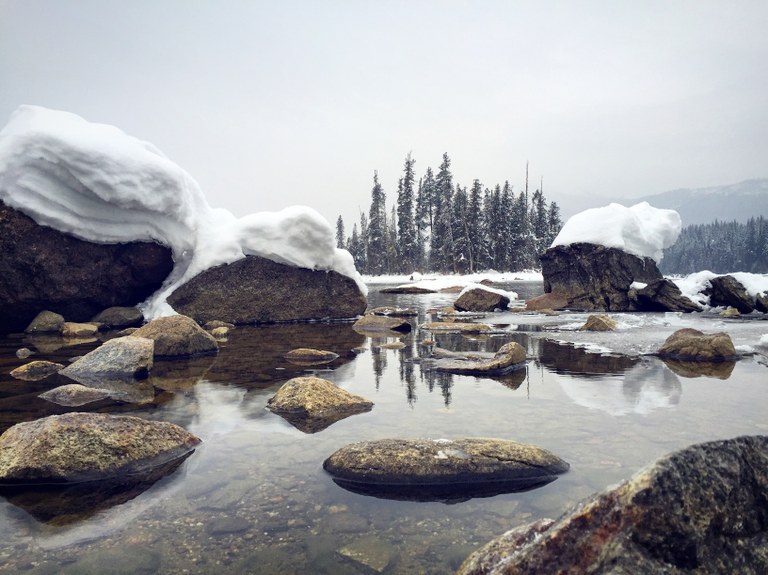
Snowy rocks at Lake Wenatchee State Park. Photo by Amanda Fisher.
> Plan your visit to Lake Wenatchee State Park using WTA's Hiking Guide
Ginkgo Petrified Forest State Park
Length: 5 miles, roundtrip
Elevation Gain: 1,200 feet
Why it's great in winter: This low-elevation, dry park sees less moisture than other areas in Washington. Spend less time worrying about snow, and more time having fun on trail!
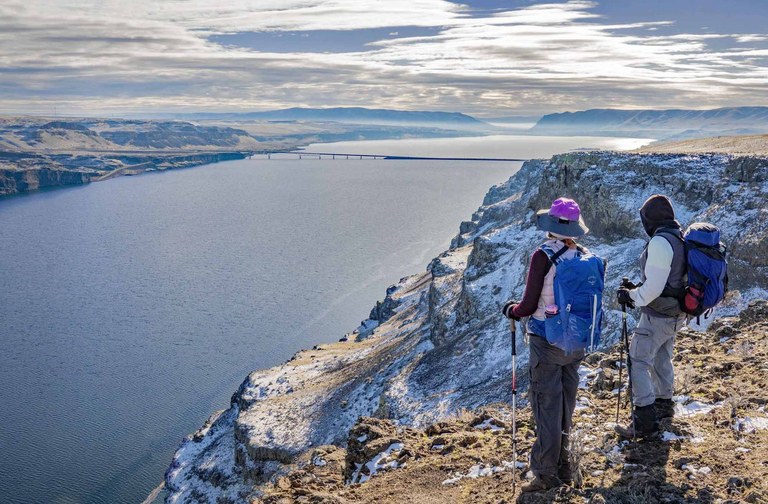
Ginkgo Petrified Forest State Park. Photo by mytho-man.
> Plan your visit to Ginkgo Petrified Forest State Park using WTA's Hiking Guide
Central Cascades
Wallace Falls State Park
Length: 5.6 miles, roundtrip
Elevation Gain: 1,500 feet
Why it's great in winter: These waterfalls flow year-round, but are at their highest volume in winter and early spring. Visit after fresh rainfall to enjoy them at their maximum spray-zone!
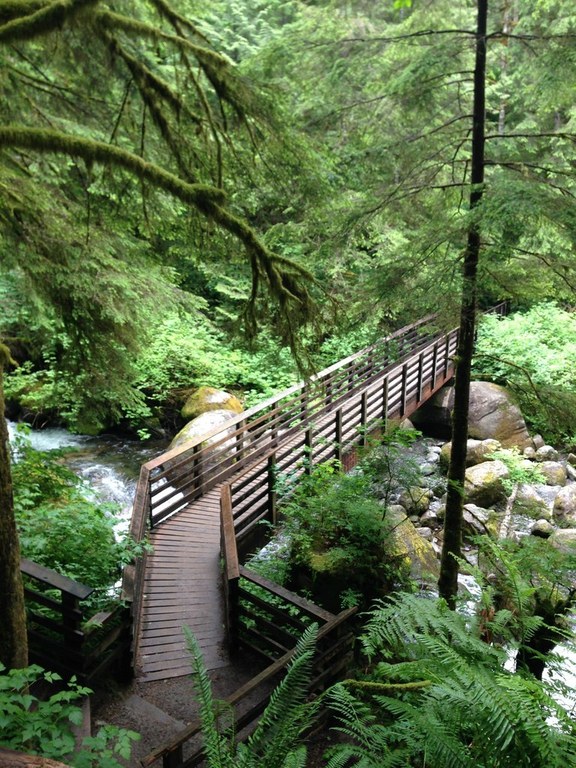
Wallace Falls State Park. Photo by Just Starting.
> Plan your visit to Wallace Falls State Park using WTA's Hiking Guide
Puget Sound and Islands
Saint Edward State Park
Length: 3 miles, roundtrip
Elevation Gain: 400 feet
Why it's great in winter: Saint Edward State Park is accessible year-round and offers a number of outdoor activities for hikers in King County. Besides its historic Saint Edward Seminary building, it contains picnic tables (reservations encouraged if you gave a gathering), play fields, mountain bike trails and a playground.
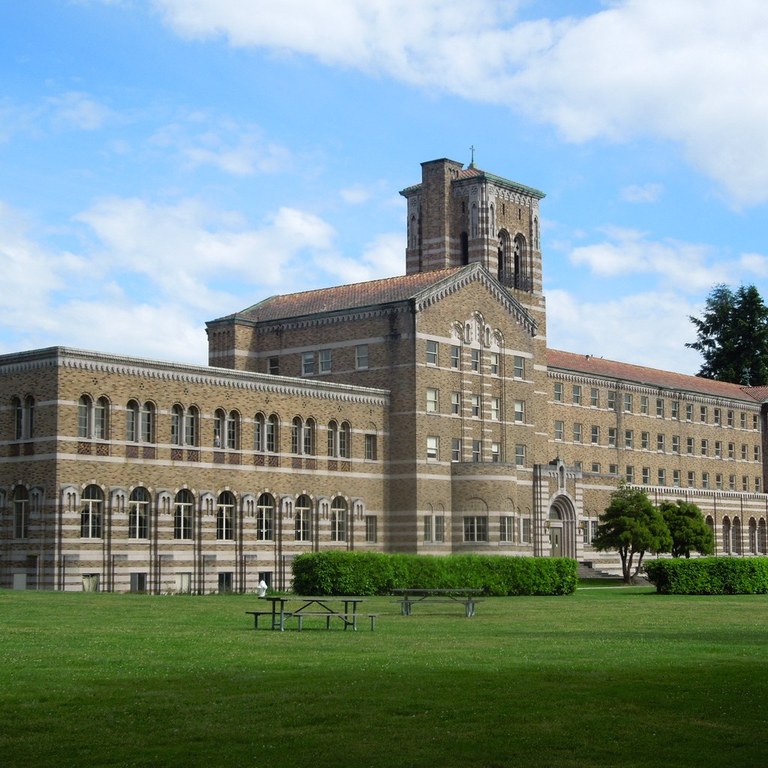
The old seminary building at Saint Edward State Park. Photo by Taum Sauk.
> Plan your visit to Saint Edward State Park using WTA's Hiking Guide
Saltwater State Park
Length: 2 miles of trails
Elevation Gain: Varies
Why it's great in winter: Who needs blue skies and warm temperatures to have a beach day? This waterfront location is great for sea-life viewing and beachcombing.
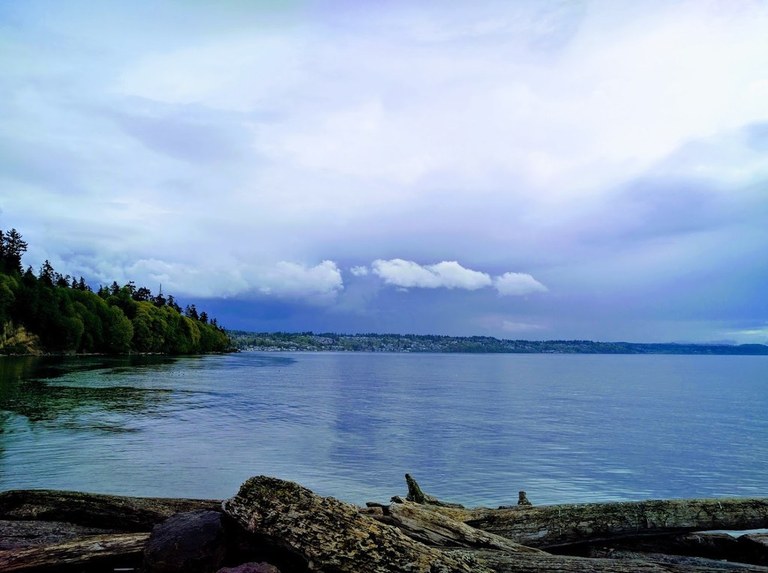
Saltwater State Park by jtmeow.
> Plan your visit to Saltwater State Park using WTA's Hiking Guide
Snoqualmie Region
Palouse to Cascades Trail
Length: 5.5+ miles
Elevation Gain: 1,077+ feet
Why it's great in winter: Whereas the entire Palouse to Cascades State Park Trail (link) stretches 224 miles across the state, this section highlights the west side of the Cascades. It is the perfect section for hikers who want to get into the mountains but don’t want to deal with snowy passes or hazardous roads.
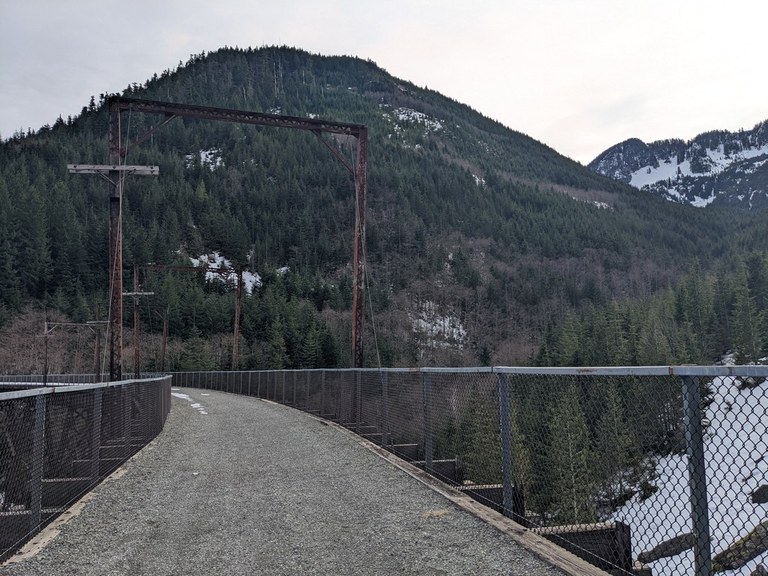
Palouse to Cascades Trail by Tiffany Chou.
> Plan your visit to the Palouse to Cascades Trail using WTA's Hiking Guide
Lake Easton State Park
Length: 5.2 miles, round trip
Elevation Gain: 451 feet
Why it's great in winter: This urban park is a great break from the hustle and bustle of I-90. It offers tremendous views of the lake as well as opportunities to cross country ski and snowshoe. It’s far enough east to make it less popular than many snow-sport areas closer to the Cascades, making it a great place to learn the ropes or enjoy less crowds.
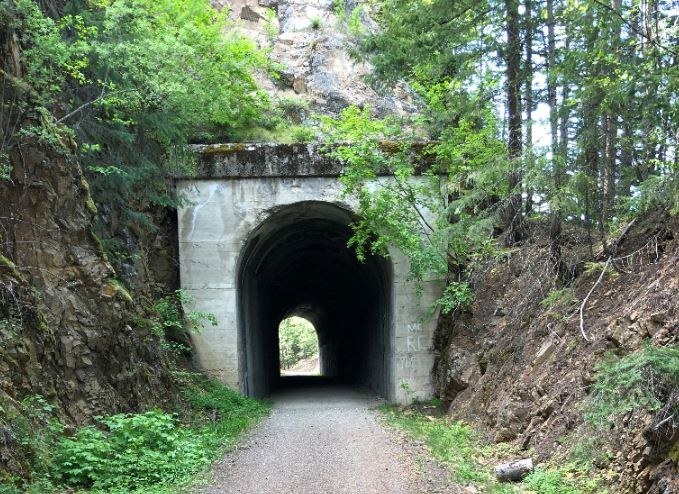
Lake Easton State Park tunnel. Photo by Chris Burke.
> Plan your visit to Lake Easton State Park using WTA's Hiking Guide
Olympic Peninsula
Fort Townsend Historical State Park
Length: 6.5 miles of trails
Elevation Gain: Varies
Why it's great in winter: Break a mental sweat and learn about Townsend Historical State Park’s rich military history while visiting its saltwater shoreline. While the original Fort Townsend was built in the 1850s, the area saw its fair share of changes until the 1950s, when it officially became a state park.

Fort Townsend Historical State Park. Photo by Bob and Barb.
> Plan your visit to Fort Townsend Historical State Park using WTA's Hiking Guide
Southwest Washington
Battle Ground Lake State Park
Length: 1 mile, roundtrip
Elevation Gain: 120 feet
Why it's great in winter: Battle Ground State Park’s trails are great for families and those looking to explore its geological features. This park is sometimes referred to as a “miniature” version of Crater Lake National Park due to its deep, clear lake.

Battle Ground Lake State Park by PNW_VGN_HKR.
> Plan your visit to Battle Ground Lake State Park using WTA's Hiking Guide
Cape Disappointment State Park
Length: 1.8 miles, one-way
Elevation Gain: 420 feet
Why it's great in winter: With big trees and a rugged coastline, Cape Disappointment State Park offers the quintessential Pacific Northwest experience! Its North Head Lighthouse is an iconic destination for Pacific-dwelling Washingtonians and is a great place to chase storms in the winter months.

Cape Disappointment State Park by Anna Roth.
> Plan your visit to Cape Disappointment State Park using WTA's Hiking Guide




